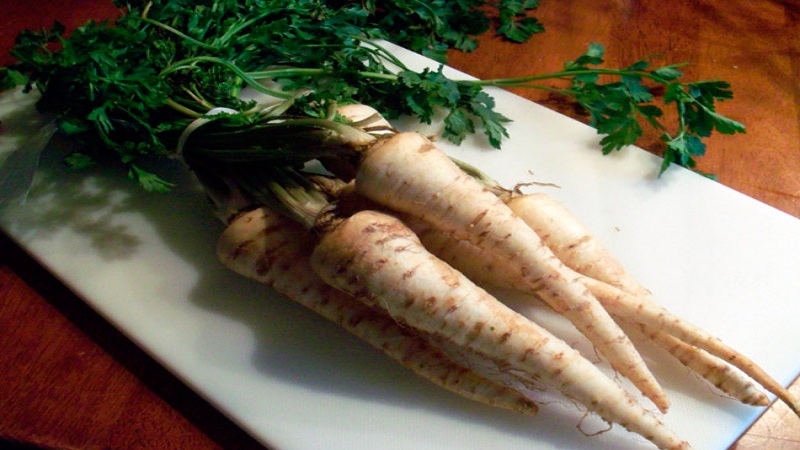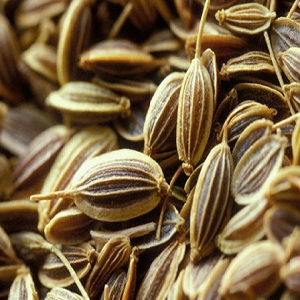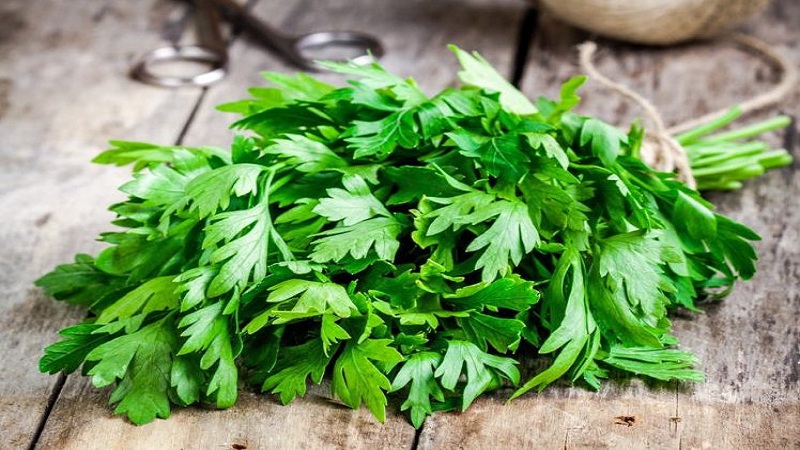Review of the best varieties of parsley and their varieties
Petroselinum - “growing on stone”, as the ancient Greeks called parsley, which grew wild on the rocky shores of the Peloponnese. At first, parsley was cultivated as an ornamental plant, later the taste and useful qualities of greens, roots and seeds were evaluated. Over time, breeders have managed to develop many varieties of leaf, curly and root parsley.
In this material, we have collected top varieties for you with a description of the main characteristics.
The content of the article
Description and characteristics of the plant
Parsley is a biennial plant from the Umbrella family... Most often grown as an annual for greenery and roots. In the second year of the growing season, the plant forms a flower stalk with seeds. The culture reaches a height of 1.5 m.The curly variety is compact in size, the bushes grow up to 80 cm.
Leaf color from bright green to dark green... The leaf plate is triangular in shape, twice pinnately dissected, matt below, glossy on top. Curly parsley leaves are strongly corrugated, slightly harsh.
Stems are erect, branched, thin or thick, depending on the variety.
Parsley root has a cylindrical, conical, fusiform shape... The skin is gray-white, the flesh is white or creamy gray in color. The length depends on the variety and is 18-30 cm.The weight is 30-300 g.

Root variety greens are dark green, smooth, aromatic... The leaf blade is strongly dissected, slightly coarse compared to leaf parsley. The erect stem is highly branched and grows up to 1 m in height.
Peduncle with small yellow-green flowers, collected in umbrellas... Seeds are oblong-ovate, brownish-green in color. The culture enters the flowering period in July - August.
The taste of greens is refreshing, spicy, with a tangy aftertaste... The aroma is intense, tart. The parsley root is characterized by a strong aroma due to the content of essential oils. The taste is reminiscent of celery and carrots at the same time.
 Sowing seeds is performed in March - April after warming up the soil to a depth of at least 2 cm.
Sowing seeds is performed in March - April after warming up the soil to a depth of at least 2 cm.
The seeds are stratified to increase germination: they are soaked in warm water for 2 days, then wrapped in a damp cloth and left until the seedlings appear. Then the bundle is placed in the refrigerator for 10 days, after which it is dried until flowable.
Plant suitable for growing in open ground, greenhouse, under film shelters in greenhouses, on the windowsill.
For growing on an industrial scale use Dutch hydroponic cultivation technology - artificial environment without soil. The root system is immersed in a nutrient aqueous solution saturated with oxygen, or a porous substrate. This method involves frequent drip irrigation with nutrient solutions.
Mineral wool, expanded clay, sawdust, coconut coir are used as a substrate.
Reference. In regions with a cold climate (in Siberia, in the Urals), winter sowing of parsley and the cultivation of the root variety through seedlings are practiced. In the middle lane and in the south of the country, seeds are sown directly into prepared beds.
Parsley grows best in soils with neutral or slightly acidic acidity. (pH = 6.5-7.5). The culture needs sufficient watering, loosening the beds and weeding, thinning crops and applying organic fertilizers.

The best varieties of leaf variety
The table contains characteristics of popular varieties of leaf variety.
| Name | Ripening period days | Taste / aroma | Features: | Color | Productivity kg / m² |
| Ordinary sheet | 65-75 | Spicy, bright | Well-developed rosette, lush greenery, small roots | Green | 3,5-11 |
| Beautiful festival | 55-60 | Spicy, rich | Well-developed rosette with heavily dissected leaves | Bright green | 3-8 |
| Green crystal | 85-90 | Spicy, rich | The rosette is half-raised, the leaves are large | Dark green | 2,8-3,5 |
| Enchantress | 70-80 | Spicy, rich | Semi-vertical rosette with dense greenery | Green | 3,2-4,5 |
| Leaf sandwich | 65-80 | Spicy, strongly pronounced | Semi-vertical rosette with dense greenery | Green | 3,2-4,2 |
The best varieties of root varieties
The table contains popular varieties root parsley, characterized by unpretentious care and pleasant taste.
| Name | Ripening period days | Root shape | Length cm | Weight g | Pulp color |
| Sugar | 95-100 | Conical spiky |
25-30 | 100-110 | Gray-white |
| Yielding | 128-130 | Conical spiky |
20-22 cm | 90-100 g | Gray-white |
| Bordovician | 130-135 | Elongated cylindrical | 30-35 | 150-170 | Gray-white |
| Eagle | 130-135 | Cone-shaped | 25-30 | 130-140 | Gray-white |
| Good morning | 125-130 | Cone-shaped pointed |
20-23 | 100-120 g | White |
Interesting on the site:
Diseases and pests of parsley: methods of control and prevention
The best varieties of curly parsley
The table presents characteristics of the best varieties curly parsley.
A common feature is that greens retain their freshness for a long time after cutting.
| Name | Ripening period days | Leaves | Taste / aroma | Color | Feature of the variety | Productivity kg / m² |
| Kucheryavets | 85-90 | Corrugated, decorative | Spicy, rich | Green | The socket is dense, raised | 6-8 |
| Slavic | 70-80 | Large, strongly corrugated, curly with long petioles | Spicy, rich | Dark green | Semi-vertical rosette, powerful, strongly leafy | 3,8-4,5 |
| Mooskrause 2 | 80-90 | Delicate, strongly crimped | Delicate, rich | Dark green | The outlet is medium-sized, dense | 7,9-8,4 |
| Esmeralda | 32-40 | Decorative, medium, curly | Nice, sweetish, gentle | Green | The rosette is semi-raised, medium-sized, with thin petioles | 1-1,5 |
| Petra | 80-95 | Large, wavy | Spicy, rich | Dark green | Power outlet, raised | 2,3-3 |
The best varieties in terms of ripening
All varieties of parsley are divided into early, mid-season and late. The table contains popular varieties of leaf and root varieties with an indication of ripening dates and characteristics.
| Name | Ripening period | Features: | Color | The form | Productivity kg / m² |
| Italian giant | Mid-season leafy (70-80 days) | Semi-vertical rosette, 65-67 cm high. The plant is frost-resistant down to -10 ° С | Green | Leaves are large, triangular | 2,8-5 |
| The final | Mid-season root (130-135 days) | Root weight 150-190 g, length 20-23 cm | Gray-white | Conical pointed root | 4-5 |
| Carnival | Mid-season leafy (70-90 days) | Large rosette with a large number of leaves (40-100 pcs.) | Dark green | Triangular, with deep lobe cuts | 1,5-2 |
| Curly Sue | Early curly (30-40 days) | Greens grow back quickly after cutting, do not fade for a long time | Bright green | Leaves are openwork, strongly corrugated | 2,3-3 |
| Prima | Early leaf (25-30 days) | The variety is resistant to cold (withstands temperatures up to -9 ° C), quickly gains green mass | Dark green | Leaves are strongly dissected with smooth lobes | 1,7-2,3 |
The best varieties for open ground
The table contains leafy parsley varieties ideal for outdoor cultivation.
| Name | Ripening period | The form | Color | Taste / aroma | Features: | Productivity kg / m² |
| Aster (curly) | 55-60 | The leaves are large, strongly corrugated | Dark green | Delicate, bright | The socket is half-raised, medium-sized, dense | 4-5 |
| Breeze (leaf) | 70-80 | Leaves are large, wavy | Dark green | Spicy, rich | The socket is half-raised, medium-sized, dense | 4-6 |
| Salad (leaf) | 65-75 | Leaves are large, wavy | Dark green | Spicy, rich | The socket is dense, raised with dense greenery | 3-4 |
| Bogatyr (leaf and root) | Greens - 55-60, root - 140-160 | The root is conical, pointed, weighing 110 g, 20 cm long. The leaves are wavy | Root with creamy pulp, green leaves | Spicy, rich | A multipurpose variety (root and greens). Semi-spreading rosette | |
| Gloria (leaf) | 50-60 | Leaves are large, triangular | Green | Spicy, rich | The socket is dense, raised with dense greenery | 1,5-1,7 |
The best reviews of gardeners received parsley Bogatyr due to its universal purpose, unpretentious care and high yield.
Conclusion
Parsley is a biennial crop that produces lush greenery and roots. The mass, length of the root, the height and density of the rosette, the shape of the leaf blade and color depend on the varietal characteristics. There are early ripening varieties intended for early forcing of greens (Curly Sue, Prima, Astra, Gloria).
Late varieties are more suitable for winter sowing (Green crystal). Root varieties (Sugar, Urozhainaya, Bordovik) allow you to grow not only large root crops, but also get fragrant greens. The universal variety Bogatyr is appreciated for the ability to collect juicy greens and large roots.